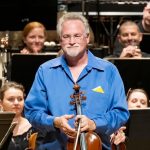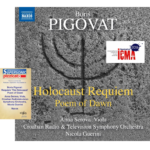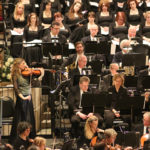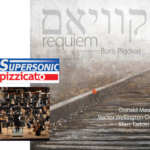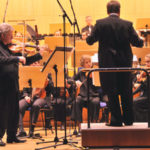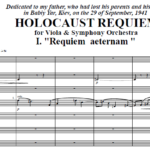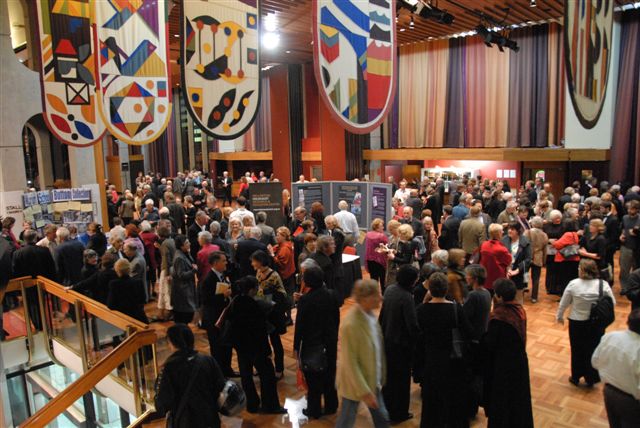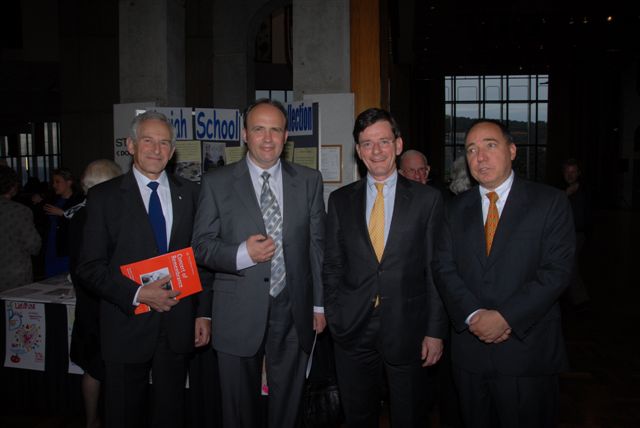
Tag: 2001-2009

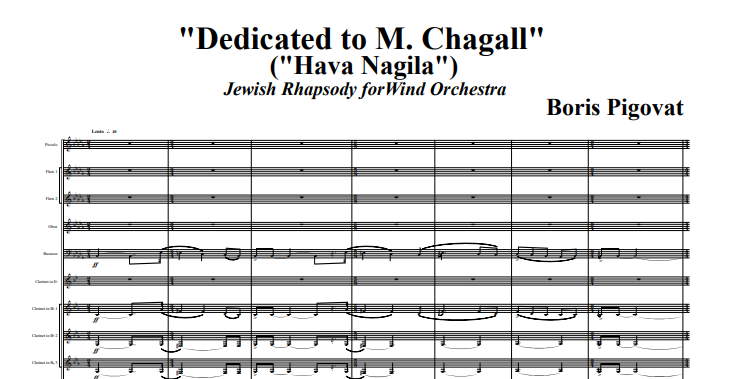
“Dedicated to Marc Chagall” (“Hava Nagila”)
Jewish Rhapsody for Wind Orchestra / String Orchestra (with Optional Piano) / Brass Ensemble / Saxophone Quartet / Solo Bayan
- Duration: ca. 9 minutes
My work Dedicated to Marc Chagall is based on the popular Jewish song Hava Nagila, which means Let us rejoice.
I had originally intended to write a rhapsody based on Hava Nagila, but I found myself writing episodes that were not derived from Hava Nagila. Suddenly, I realized that I was actually composing a tone poem, evoking scenes of a small Jewish town at the beginning of the 20th century. Such images and moods typify novels by Shalom Aleichem and the earlier paintings by Marc Chagall. I felt a particularly strong association to Chagall’s pictures. For this reason, I named the piece Dedicated to Marc Chagall, in addition to the secondary title of Jewish Rhapsody “Hava Nagila”.
I composed the piece in 2003, for wind orchestra, and then for string orchestra (with optional piano). The main part of both versions is similar, but the nature of strings required a completely different introduction for the string version.
The wind orchestra version premiered in 2003, performed by the Petach-Tikva Conservatoire Symphonic Band at Festival Kfar-Saba (in Israel), and conducted by Michael Delman.
The premiere of the string-orchestra was in 2005, performed by the Ramat Gan Chamber Orchestra (in Israel), and conducted by Aviv Ron.
Later, both versions were performed many times in Israel and around the world.
In 2015, the wind-orchestra version was also performed at the WASBE Conference in San Jose, California, by the Israel Youth Wind Orchestra, conducted by Motti Miron. Unfortunately, I don’t have a recording of that performance. However, below is the recording of a different performance of theirs, in Israel, in 2012:
In 2005, I was contacted by the Brandt-Brass Ensemble from Saratov, Russia. They sough a challenging piece to perform for international competition, and I prepared for them a version of Dedicated to Marc Chagall for brass ensemble.
In 2015, I also prepared a version for saxophone quartet; below is recording of that version performed by the Mestizo Saxophone Quartet, in 2018:
In 2012, I received an unexpected application from Ukrainian accordionist Pavel Fenyuk, asking for my permission to write an arrangement of the piece for solo bayan (chromatic button accordion). Below, is his virtuoso performance of that version:
The piece has already seen many variations, and who knows where else it will go?

On Mount Sinai (2004)
Poem for Symphonic Wind Band
- Duration: ca. 17 minutes
- Picc, 2 Fls, Ob, Bsn, P.Cl, 3 Cls, B. Cl, Shofar (ad libitum), 2 A. Sxs, T. Sx, B. Sx, 4 Hns, 4 Tpts, 3 Tbns, Bar, 2 Tbas, Str. Bass, Timp, Perc (5).
The performance of the poem begins with narration of the following scene from the Bible:
And it came to pass on the third day in the morning,
that there were thunders and lightnings,
and a thick cloud upon the mountain, and the sound of a shofar exceeding loud;
so that all the people in the camp trembled.
And Moshe brought the people out of the camp to meet with GOD;
And they stood at the foot of the mountain.
And mount Sinay smoked in every part,
because the LORD descended upon it in fire:
and the smoke of it ascended like the smoke of a furnace,
and the whole mountain quaked greatly.
And then the voice of the shofar sounded louder and louder…
…And all the people perceived the thunderings, and the lightnings,
and the sound of the shofar, and the mountain smoking:
and when the people saw it, they were shaken, and stood afar off…
…And the LORD came down upon mount Sinay,
on the top of the mountain…”
EXODUS 19 (16 – 19), 20 (15), 19 (20).
In 2004, M. Delman and the Petach Tikva Conservatoire Wind Orchestra premiered this work in Israel. They performed it again at the wind orchestra competition in Interlaken, Switzerland, and then two days later at the Mid-Europe festival in Shladming, Austria.
The evening after the performance in Interlaken, M. Delman felt strong pain, caused by acute appendicitis. He was hospitalized and had emergency surgery.
We were sure that the performance in Shladming would have to be cancelled, but, two days later, M. Delman went on to conduct his orchestra at the festival!
Such was his strength of will and creative dedication!
Below is the recording from the premiere.
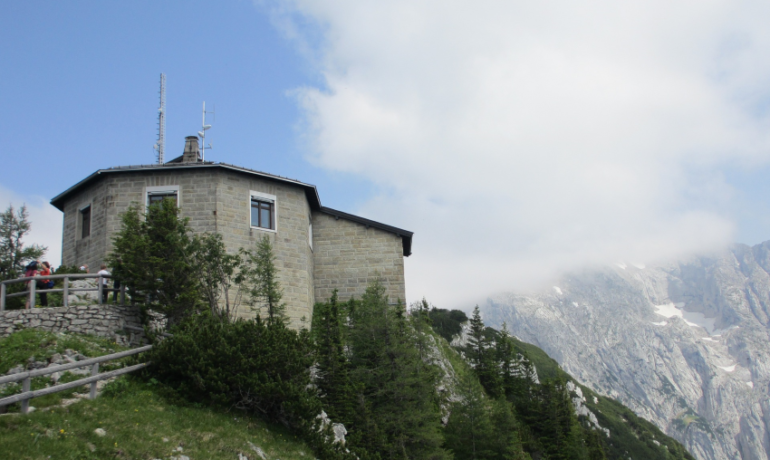
Lest We Forget (2009)
For Symphonic Wind Band / For Symphony Orchestra
- Duration: ca. 16 minutes
- SWB: Picc, 2 Fls ( = Picc. 2,3), A.Fl, Ob, Bsn, P.Cl, 3 Cls, B.Cl, 2 A.Sxs, T.Sx, B.Sx, 4 Hns, 4 Tpts, 3 Tbns, Bar, Tba, Timp, Perc (4-5).
- SO: Picc, 2 Fls ( = Picc 2, 3) 2 Obs, Eb Cl, 2 Cls, B.Cl, 2 Bsns, C-Bsn, 4 Hns, 3 Tpts, 2 Tbns, B. Tbn, Tba, Timp, Perc, Hp, Str.
Lest We Forget is a tone poem that begins with narration of the following text:
It was as in a dream:
I was standing at the top of the mountain and watching down at the Alpine valley. The view was marvelous – the green meadows surrounded by groves, small houses and herds. The pure mountain air rang as the most wonderful and fascinating music. Calm and serenity reigned at that corner of Paradise.
Suddenly I shuddered, because the name of the place I was standing was Kehlsteinhaus (the Eagle’s Nest). From this place had crawled out into the world a monster that brought suffering, torment and death to millions of people. This monster defiled and contaminated the all that it had touched; its stink poisoned the pure air. It was an absolute evil – self-satisfied, impudent, triumphant and bloodthirsty. This evil devastated the wonderful world that was full of Hope, turned it into the valley of weeping, the valley of sorrow, pain and tears.
If we forget about it, the monster will come back.
I conceived the composition in 1999, , but it took me about 10 years to complete it.
In Hebrew, I named it Lo Tishkach! (Do not forget!); these words conclude the verse about Amalek from Deuteronomy (25:19).
That was also how I initially named the piece in English. But later I decided to rename it Lest we forget, a phrase that is inscribed on a monument for Holocaust victims that I was in Wellington.
The poem was written for symphonic wind band. In February, 2010, Michael Delman premiered it with the symphonic wind band of the Petah-Tikva Conservatoire.
In 2010, I prepared a version for symphony orchestra, which has not yet been performed.
Below is the recording from the premiere.
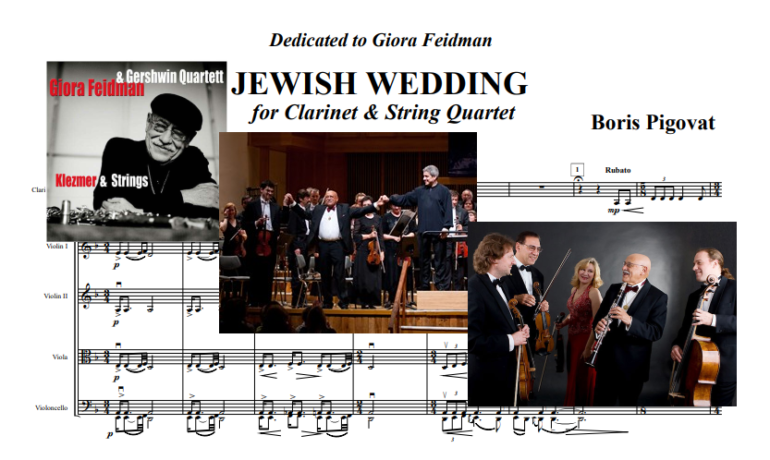
Jewish Wedding / Tzfat (2002 - 2008)
- Duration: ca. 10 minutes
In 2001 I met Giora Feidman, a world-wide famous clarinetist and performer of klezmer music. He gave me a couple of his CDs. I was so impressed by his performance, that I decided to write a piece in klezmer style, a kind of klezmer rhapsody, and to dedicate it to him.
As a composer-in-residence at the Petach-Tikva Conservatoire, I was committed to write a piece for trombone and wind orchestra.
I decided to write this piece as a klezmer rhapsody and to name it Tzfat (Safed), the name of a city where klezmer music festivals take place yearly.
Tzfat for trombone and wind orchestra was written and performed in 2002 (see recording, below).
In 2004 I prepared a version of Tzfat for violin and string orchestra, which was also performed (see recording, below).
In 2008 I met Giora Feidman again, and he listened to Tzfat. He loved the composition, and he asked me for two additional versions of it: one for clarinet and string orchestra and another for clarinet and string quartet. He also suggested to rename the piece to Jewish Wedding, arguing that, outside of Israel, people are unfamiliar with Tzfat.
The version for clarinet and string orchestra was performed by Giora with a string group of the Jerusalem Symphony Orchestra (see recording below). The version with string quartet was performed the with Gershwin Quartet more than 30 times – in Germany, Austria, Holland, Switzerland, Russia and Ukraine. See below for a YouTube video from a performance in the Berliner Philharmonie concert hall.
Later, at the request of other performers, I prepared additional versions of this Jewish Wedding / Tzfat:
- for Trumpet and Strings (arranged for ensemble of members of Israel Philharmonic Orchestra)
- for Piano Trio
- for Piano Quintet
- for Clarinet & Saxophones Quartet
- for Clarinet, Cello & Piano
- for Clarinet, Violin & Piano
- for Saxophone, Violin & Piano
In Israeli Sketches, a suite for wind orchestra, I re-used Tzfat content, but made it purely orchestral without any solo instrument.
Looking back to 2001, when I met Giora Feidman for the first time, I could not have imagined such exciting developments!
Below are the recordings.
Tzfat for Trombone and Wind Orchestra
Tzfat for Violin and String Orchestra
Ramat Gan Chamber Orchestra
Ohad Cohen (a 14-year old boy), Violin
Aviv Ron, Conductor
Ramat Gan (Israel), 2005
Jewish Wedding for Clarinet and String Orchestra
Jewish Wedding for Clarinet and String Quartet
Giora Feidman and
Gershwin Quartet
Recorded for Klezmer & Strings CD, release by Pianissimo Musik
2009
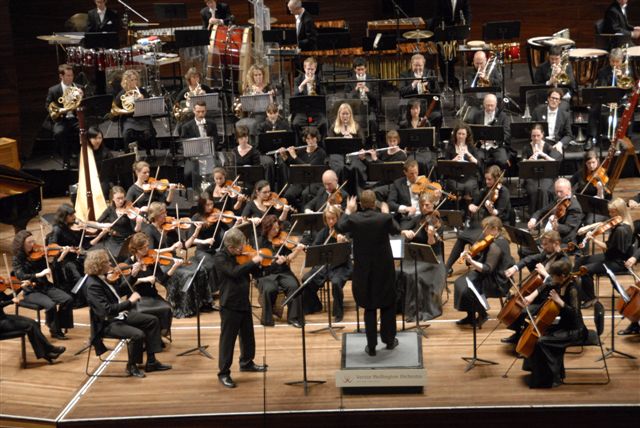
Nov, 2008: Concert of Remembrance of 70th Anniversary of Kristallnacht, Wellington, New Zealand
Holocaust Requiem was performed for it’s second time at the Concert of Remembrance for the 70th Anniversary of Kristallnacht.
The outstanding performance by violist Dr. Donald Maurice, Professor of Music at the New Zealand School of Music in Wellington, conductor Mark Taddei, and Vector Wellington Orchestra, was widely reviewed by local and international media.
Later, Donald Maurice remembered:
The performance was in 2008 but is indelibly etched into my memory. Many people were in tears. I myself said, ‘I must not cry!’” Commenting on the composition’s future and potential for effecting change, he observed, “It needs to be performed often as a reminder of the effects of war and the circumstances that precipitate one culture wanting to dominate or annihilate another.
A live recording of Requiem from the event was released by Atoll, in November 2010, with other pieces of mine.
Here is an audio recording of an interview given by Donald Maurice and Marc Taddei to Radio New Zealand (Nov 2008).
Below are some samples of that amazing performance and some photos from the event.
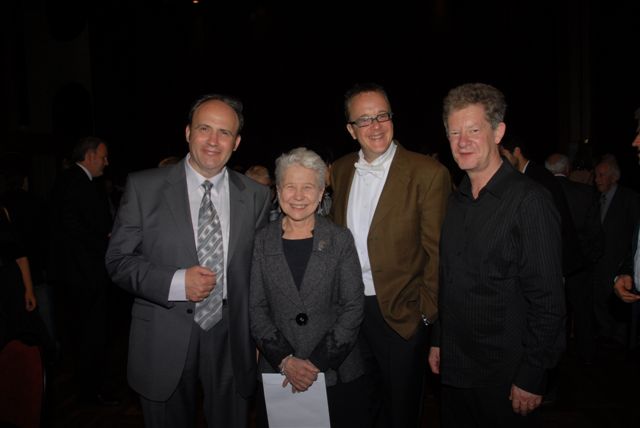
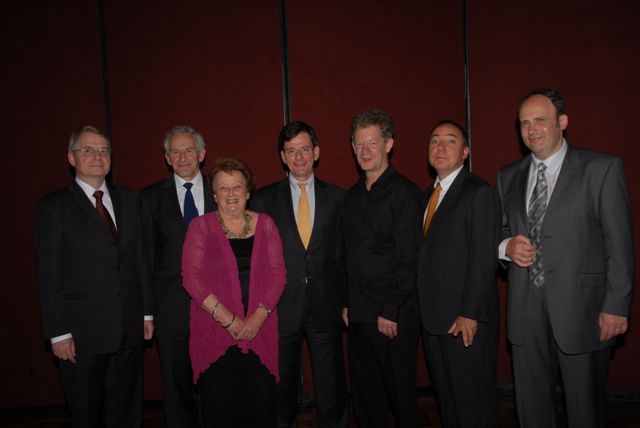
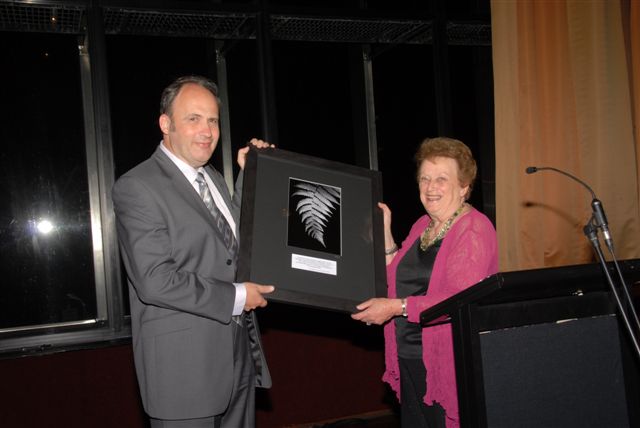
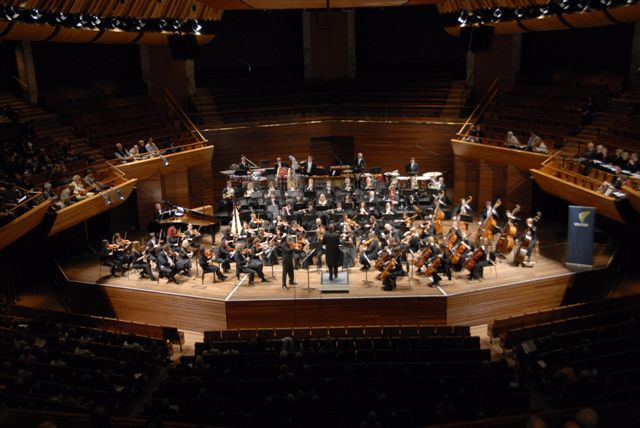

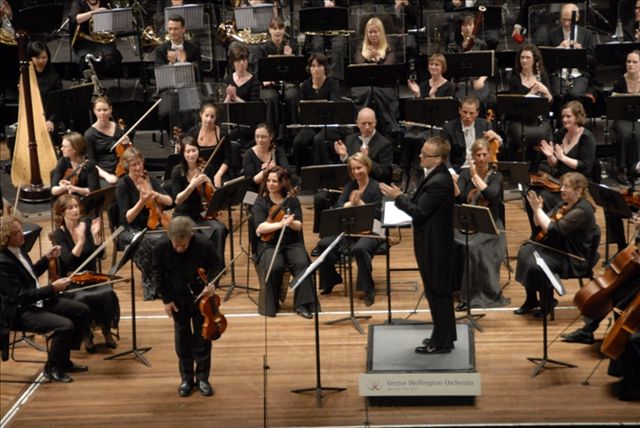
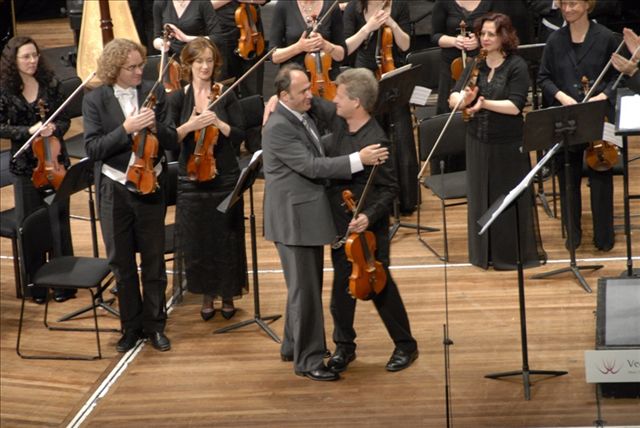
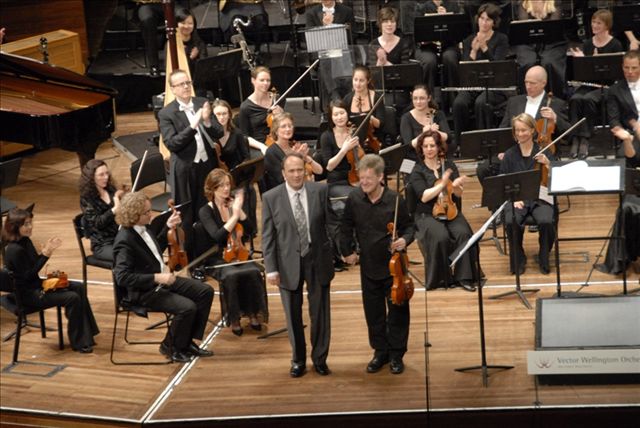
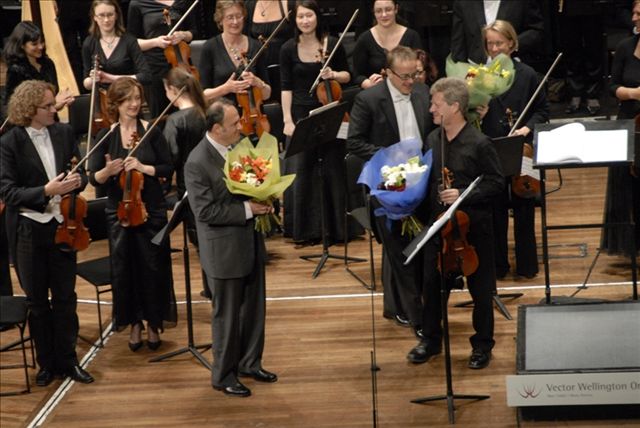
Requiem “The Holocaust” is not music for the faint of heart. The listener is drawn inexorably into the unfolding tragedy... Pigovat runs a stylistic gamut from tonal to expressionistic with hints of Berg and Shostakovich as he gradually unfolds his nightmare. Though instrumental throughout, there are times one can hear “Re—qui-em” among the many busy layers of musical texture.
The Music is harrowing and tense, and very Russian in sound. Echoes of contemporary composers such as Denisov, Kanchelli and Gubaidulina can be heard, as well as the inexorable thread of Shostakovich in the Dies Irae, but the voice of the composer remains highly individual. Balancing the violence, anger and tension is the conciliatory beauty of the Lux Eterna that rounds out a work of deeply felt power.
Using purely orchestral forces this 46-minute symphonic-concerto encompasses ear-splitting anguish, horror and confusion -- tolling tintinnabulations mark the outset of unspeakable atrocities while abject grief is heightened by sonorous lamentations of the solo viola; a role of unusually formidable demands.
Pigovat's music is evocative and distuibing in its depiction of the Holocaust. With styles reminiscent of other Russian composers, including the rich melancholy of Shostakovich the
compositional style is still distinctly Pigovat's own.
Intense and strongly assured it is a life-affirming piece that makes a telling statemen with subtlety.
